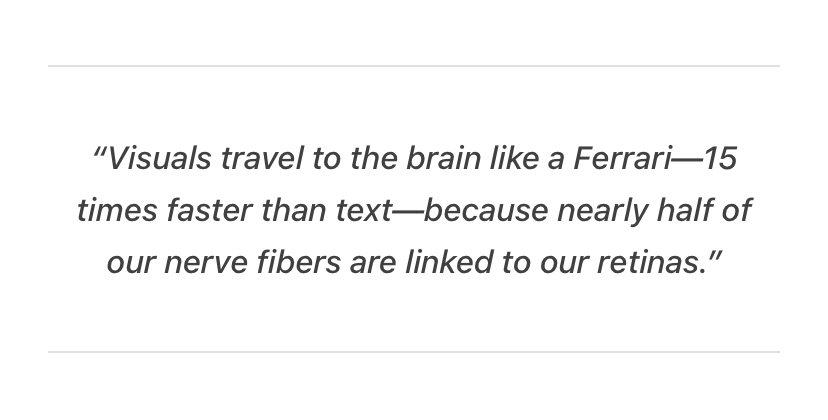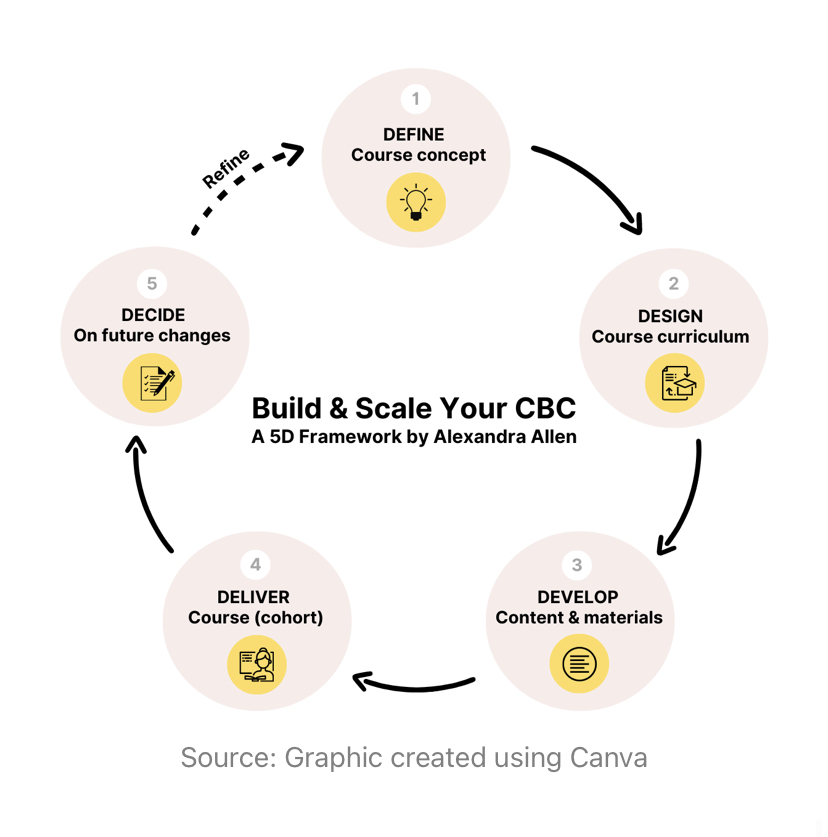
Alexandra Allen@AlexandraAllen_
Nov 24, 2022
20 tweets
Most course creators never launch—let alone scale—their course.
35% is a high conversion rate for course accelerators.
Here are 8 pitfalls people run into (+ a framework I've developed over 3 years to avoid them):
 4 Common Pitfalls Pre-Launch:
1. Overwhelm due to a lack of structure around building out the course content & materials.
2. Anxiety about teaching on Zoom & making content engaging.
3. Stress about covering the bases & getting everything done in time.
4 Common Pitfalls Pre-Launch:
1. Overwhelm due to a lack of structure around building out the course content & materials.
2. Anxiety about teaching on Zoom & making content engaging.
3. Stress about covering the bases & getting everything done in time.4. Burnout from spending hundreds of hours working on the wrong things—or in the wrong order.
Now, you would think surviving—or thriving—in your pilot cohort would be the end of your hard times. But not necessarily.
Many struggle to sustain their course, let alone scale it.
People I coached a year ago through accelerators have approached me over the last few months with problems.
Example: registration numbers took a nose-dive in their second or third cohorts. And they don’t have the bandwidth to keep their courses going.
They’re not alone.
 4 Common Pitfalls After Your 1st Cohort:
1. Exhaustion from the 1st cohort & a lack of energy to kickstart the next.
2. Stress & anxiety around how to get everything done for the next cohort.
3. Confusion around what was done last time & how to avoid reinventing the wheel.
4 Common Pitfalls After Your 1st Cohort:
1. Exhaustion from the 1st cohort & a lack of energy to kickstart the next.
2. Stress & anxiety around how to get everything done for the next cohort.
3. Confusion around what was done last time & how to avoid reinventing the wheel.4. Exasperation & disappointment about not being able to fill a second or third cohort.
All of these things can manifest as a pit in your stomach, sleepless nights, and depletion.
But it doesn’t have to be like that.
All of these pitfalls are avoidable—if you know what support to ask for in advance.
 The Solution You Don’t Know to Ask For:
I’ve spent 14 months experimenting with products & services for course creators.
I’ve offered coaching, consulting, workshops & workbooks.
The Solution You Don’t Know to Ask For:
I’ve spent 14 months experimenting with products & services for course creators.
I’ve offered coaching, consulting, workshops & workbooks.
 The Solution You Don’t Know to Ask For:
I’ve spent 14 months experimenting with products & services for course creators.
I’ve offered coaching, consulting, workshops & workbooks.
The Solution You Don’t Know to Ask For:
I’ve spent 14 months experimenting with products & services for course creators.
I’ve offered coaching, consulting, workshops & workbooks.I’ve gotten great feedback on each.
But I still felt something was off.
Because I knew I was only scratching the surface of what I could unlock in clients by offering my advice in fragments.
I needed a holistic approach.
And that got me thinking…
 Project Management:
I was a certified Project Manager long before I moved into the online course space. So I decided to go back to my roots.
At first, I started using ADDIE with clients. ADDIE stands for analyze, design, develop, implement, and evaluate.
Project Management:
I was a certified Project Manager long before I moved into the online course space. So I decided to go back to my roots.
At first, I started using ADDIE with clients. ADDIE stands for analyze, design, develop, implement, and evaluate.It’s the go-to project management framework for most academic course designers.
But over the summer, I realized it wasn’t the right fit for my clients.
Because it’s typically applied within schools and organizations.
It doesn’t account for the broader aspects of defining a course concept based on market positioning.
But it does provide an excellent framework for course design. So I decided to remix it based on my clients’ needs.
Based on a tip from my marketing pal @Cam Houser, I opted to brand it as my “5D framework” (not to be confused with the spiritual connotation) in which each of the five stages begins with a D-word: define, design, develop, deliver, and decide.
The alliteration is win-win for both marketing and learning camps. Because it facilitates recall, making it easy for people to remember.
Keep reading for an in-depth look at my framework.
 Course-Building Framework:
Have you ever reflected on why frameworks are so helpful? If not, pause for a moment to do so.
Then, read this electric quote from author and course creator @Terri Lonier | Authority By Design:
Course-Building Framework:
Have you ever reflected on why frameworks are so helpful? If not, pause for a moment to do so.
Then, read this electric quote from author and course creator @Terri Lonier | Authority By Design: Terri helps experts create frameworks and Visual IP to increase their impact and income (check out her course Authority by Design for more information).
I’ve learned a lot from Terri over the past year, especially mentoring Write of Passage together.
That’s when it hit me.
My clients need a clear path to the promised land of running a scalable course.
So I made the visual below for them to:
• Create a mental model for how to operate
• Orient themselves within a clearly defined process
• Articulate where their needs, blocks & questions lie
This is how I make the process visual.
From there, I take things a layer deeper. For each of the 5 phases, I provide clients with:
• Templates
• Checklists
These enable clients to do the bulk of their work autonomously, and enable me to be more specific in my coaching.
Because now my clients and I are coming at problems with a shared vision of where they need to go in relation to where they’re stuck.
We’re speaking the same language and that means we’re amplifying speed and traction.
It’s a win-win dynamic.
TLDR:  Build & scale your CBC using my 5D Framework to avoid:
Build & scale your CBC using my 5D Framework to avoid:
 4 Pitfalls Pre-Launch:
• Stress
• Anxiety
• Burnout
• Overwhelm
4 Pitfalls Pre-Launch:
• Stress
• Anxiety
• Burnout
• Overwhelm
 4 Pitfalls After Your 1st Cohort:
• Confusion
• Exhaustion
• Stress & anxiety
• Exasperation & disappointment
4 Pitfalls After Your 1st Cohort:
• Confusion
• Exhaustion
• Stress & anxiety
• Exasperation & disappointment
 Build & scale your CBC using my 5D Framework to avoid:
Build & scale your CBC using my 5D Framework to avoid:
 4 Pitfalls Pre-Launch:
• Stress
• Anxiety
• Burnout
• Overwhelm
4 Pitfalls Pre-Launch:
• Stress
• Anxiety
• Burnout
• Overwhelm
 4 Pitfalls After Your 1st Cohort:
• Confusion
• Exhaustion
• Stress & anxiety
• Exasperation & disappointment
4 Pitfalls After Your 1st Cohort:
• Confusion
• Exhaustion
• Stress & anxiety
• Exasperation & disappointmentI hope you've found this thread helpful.
For more tips on course-building:
• Follow me @Alexandra Allen
• Subscribe to my newsletter ( in bio)
P.S. Please like/Retweet the first tweet below to share it with your audience:
in bio)
P.S. Please like/Retweet the first tweet below to share it with your audience:
 in bio)
P.S. Please like/Retweet the first tweet below to share it with your audience:
in bio)
P.S. Please like/Retweet the first tweet below to share it with your audience:
Alexandra Allen@AlexandraAllen_
Nov 24 22
View on Twitter
Most course creators never launch—let alone scale—their course.
35% is a high conversion rate for course accelerators.
Here are 8 pitfalls people run into (+ a framework I've developed over 3 years to avoid them):

Alexandra Allen
@AlexandraAllen_
Tips to teach your craft • Worked with 50+ experts at startup & course accelerators • Learn how to structure win-win courses for you & your students
Missing some tweets in this thread? Or failed to load images or videos? You can try to .


